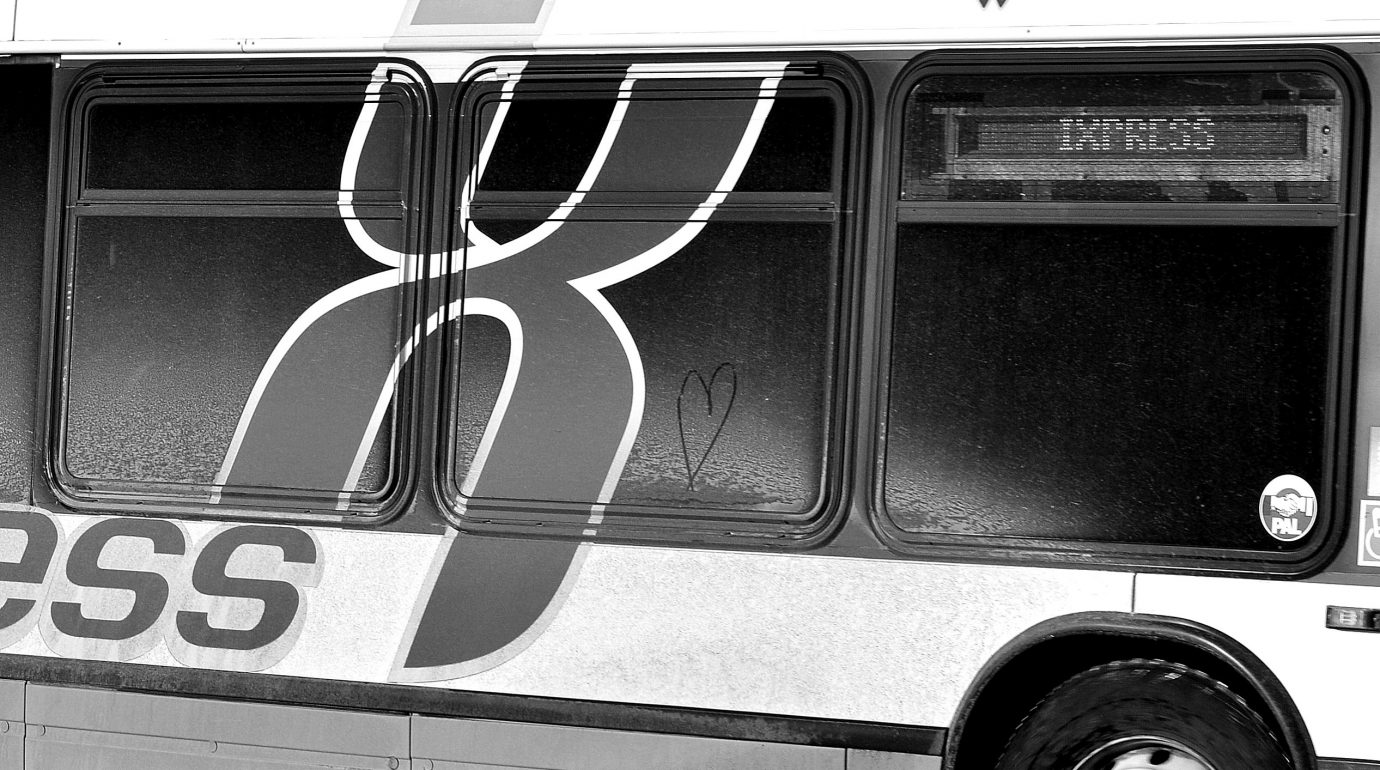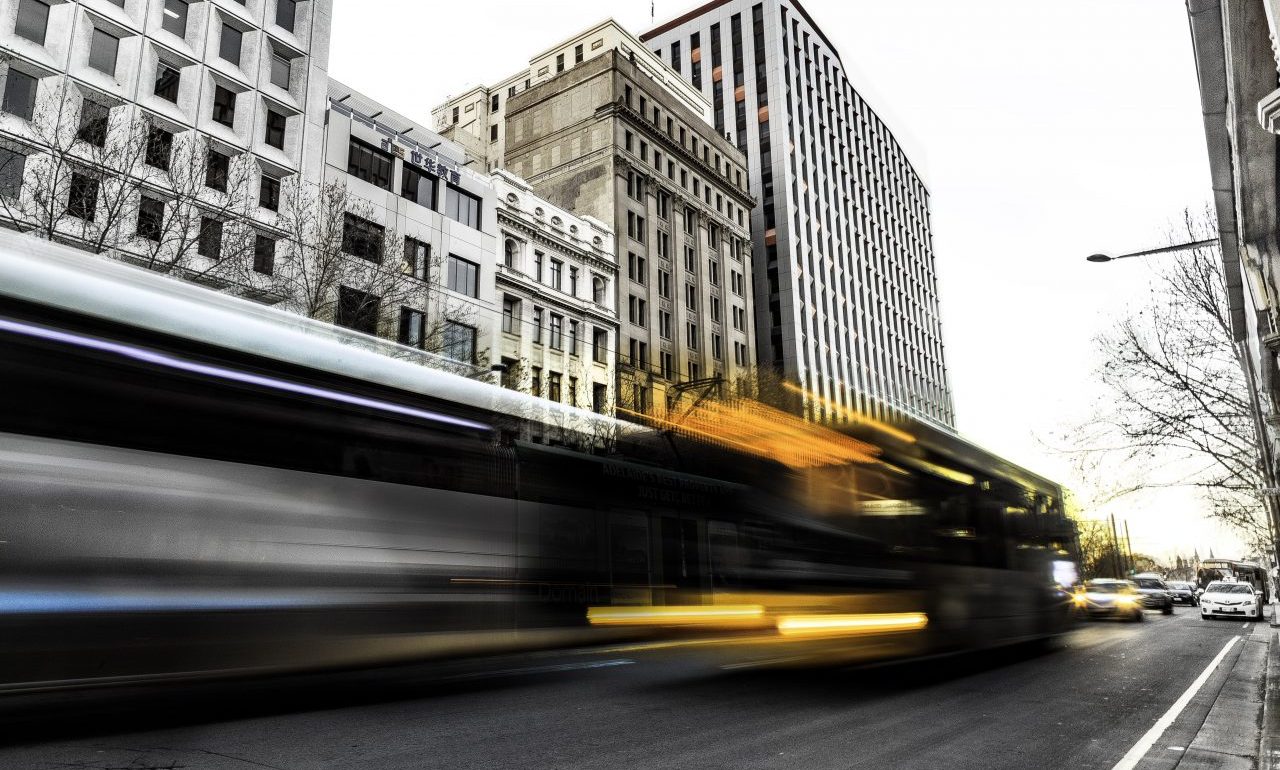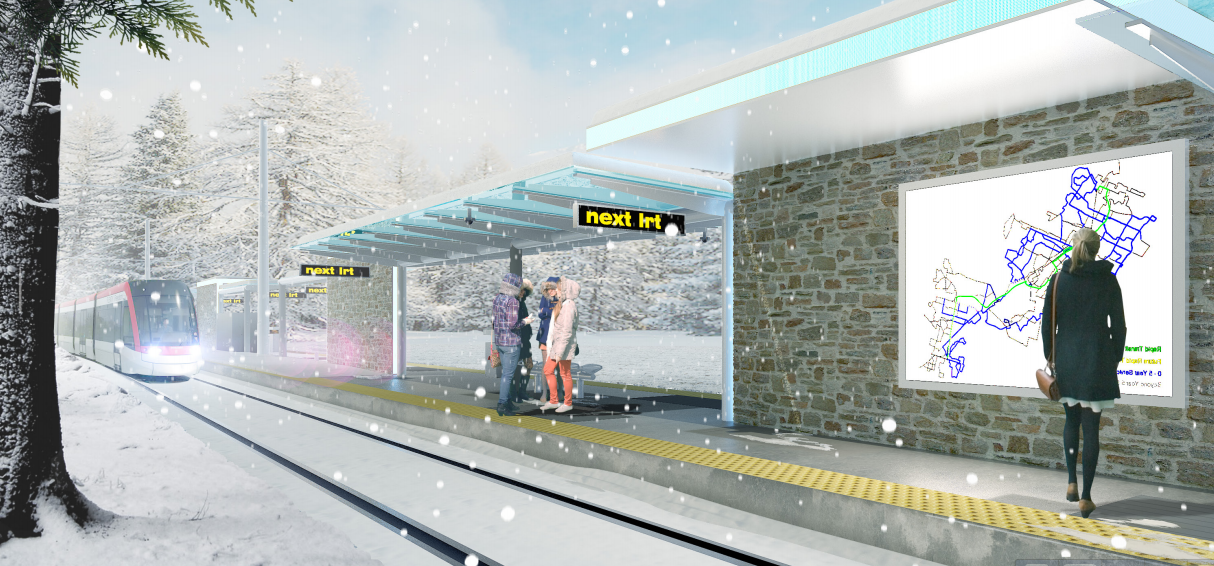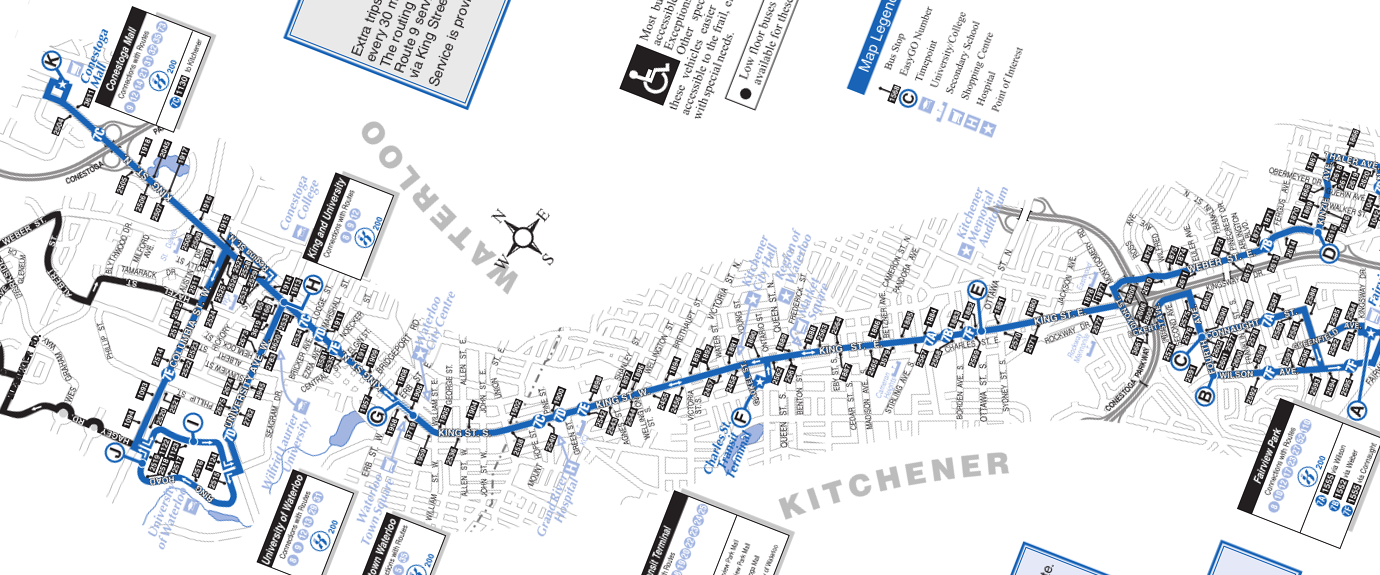Grand River Transit is investing in a new transit plaza next to the University of Waterloo’s ION station. But they have no stated plan to connect the 202 University iXpress with this location. In fact, they propose to have the 202 drive over the tracks and not stop near ION at all. How could this be? See the plans yourself, and then tell GRT you want the 202 to connect with ION.
Imagine that it’s early 2018, and ION has begun service. A young woman leaves her home in the Beechwood neighbourhood bound for work. Instead of getting in the car as she normally would, she walks towards the closest bus stop. Today she will find out if ION works for her.
It’s a short walk to the bus shelter, and a short wait for her bus to arrive: a 202 University iXpress. It quickly carries her along Erb to University Avenue, then through campus and she steps off the bus just metres away from the ION platform. It’s a quick and convenient transfer as the train glides smoothly into the station as she walks up and just like that, she’s on her way downtown.
Now imagine instead, her bus drives right past the University of Waterloo. There’s the unmistakable thump-thump of crossing railway tracks: surely, this must be the place to transfer. But no, the bus keeps going.
She gets out at the very next stop, beyond Phillip St. She doesn’t know the area, and she can’t see the station anywhere around here. She asks a passing student, who points back towards the tracks. She starts walking.
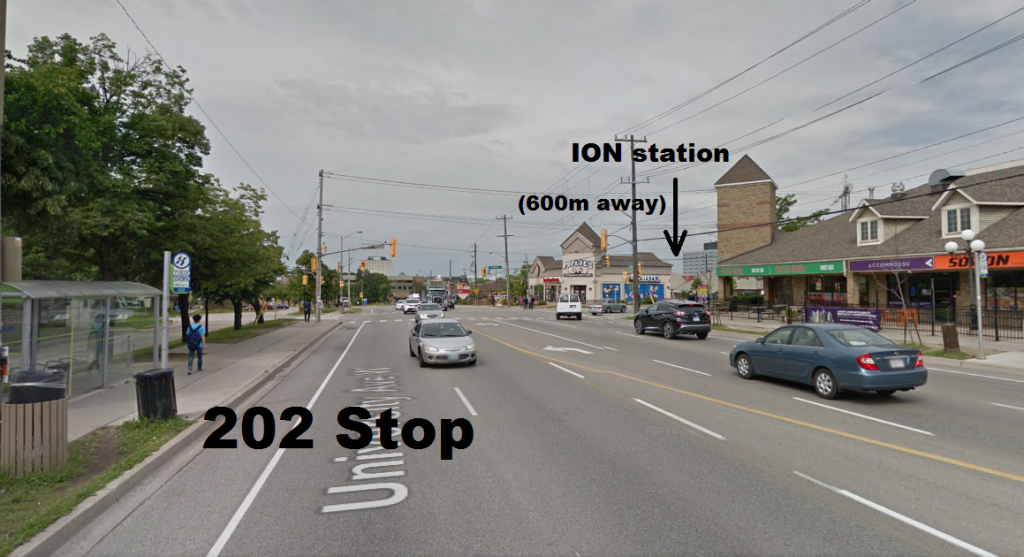
Despite crossing each other, the 202 and ION stops are a long way apart.
It’s almost 10 minutes before she has found her way to the ION station. By now, she’s cold and annoyed. These iXpress buses were supposed to connect seamlessly with the train, she thinks. Do they actually expect her to walk all this way every time to catch her train downtown, and then find her way back to this bus stop in the evening? Why does her bus completely bypass the light rail line whose tracks it drives over? She can’t understand why anyone would think this was a good idea. She resolves to go back to driving tomorrow.
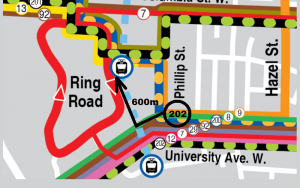
Of all these routes, the 202 is the most vital to connect with ION.
Sadly, it is this latter scenario that we are being set up for. GRT revealed its plans for the new UW transit plaza and route adjustments in the area to connect here, and those plans specifically exclude the 202 University iXpress. Despite the creation of this plaza and the placement of the UW ION station, the University of Waterloo wants to block bus access to sections of Ring Road. The 202, serving our region’s second largest transit corridor, is a casualty of this decision, currently relegated to bypass ION and stop a long distance away.

The 202 is Waterloo’s best cross-town route, extending to Erb West and University East.
But there are alternatives. There are ways to make this work. Unfortunately, Grand River Transit appears to be proposing inaction when they presented to the public last week. The vision of iXpress cross-town lines feeding the ION transit spine may well be abandoned where it is most critical.
We must ensure that this connection happens. GRT needs to step up, and deliver a solution. And if GRT can’t bring the 202 to the UW transit plaza, then it should instead be routed to connect with ION at the Laurier-Waterloo Park station on Seagram drive.
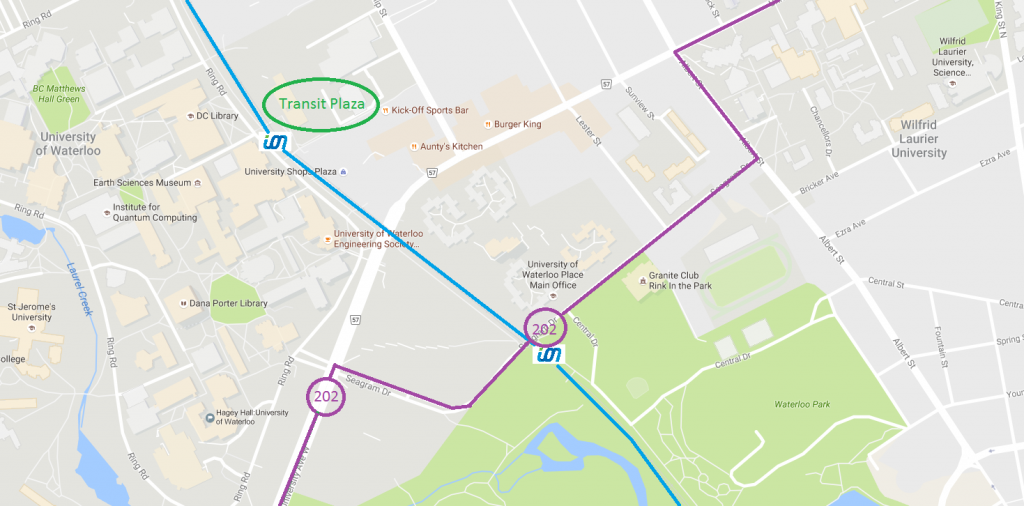
Why not connect 202 with ION on Seagram, and also provide Laurier with an ION shuttle at the same time?
Making these connections between ION and iXpress is of paramount importance to ensuring that our investment in LRT benefits more than those who live and work immediately adjacent to the line, because they connect ION riders to many more destinations outside the central transit corridor.
It’s not too late to tell GRT directly that you want to see the 202 iXpress bring you to ION’s doorstep. You can see GRT’s plans yourself, and submit your comments online. Let’s help our transit planners make the connection.
Find out other ways you can help to make the connection.
Read More »
